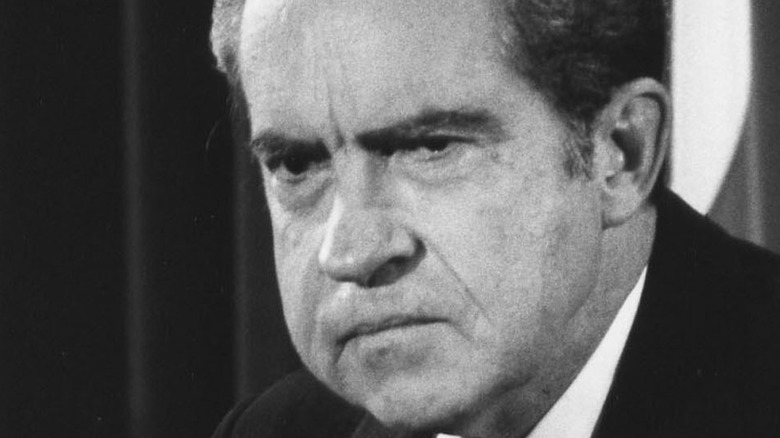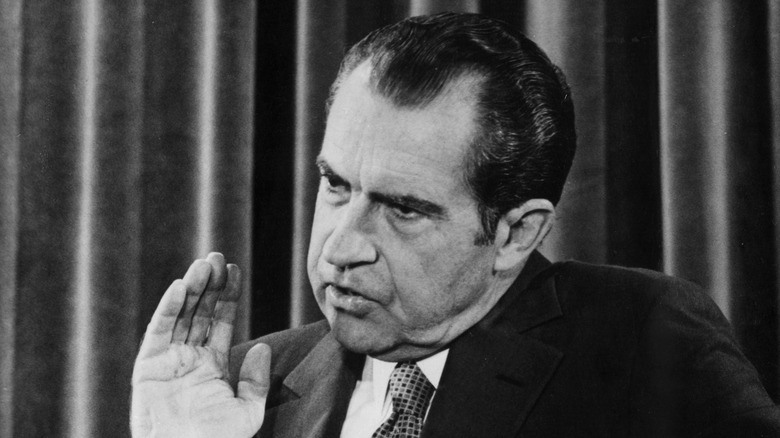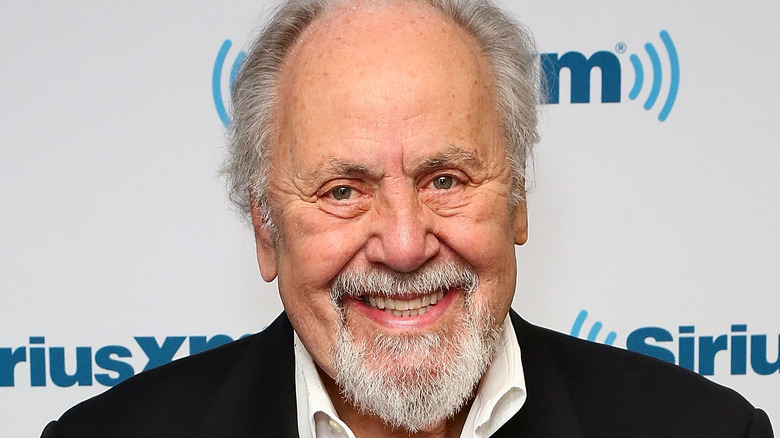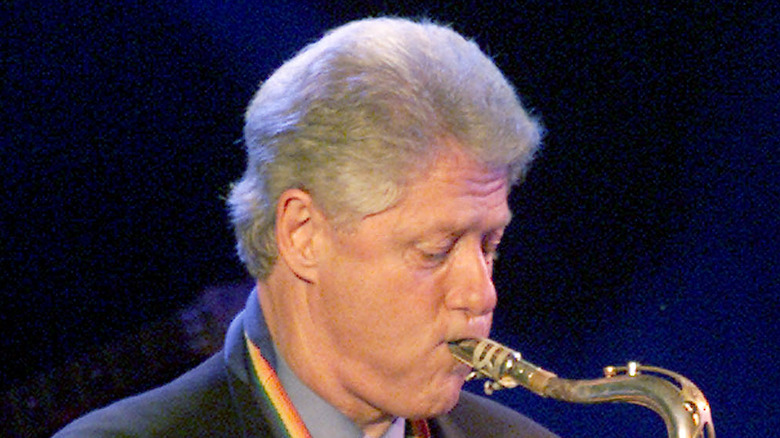How Richard Nixon's Variety Show Appearance May Have Helped Him Win The Presidency
The advent of television changed the ways that the general public could access information on people running for political office or people already in power. Television gave people access to debates, inaugurations, and even the coronation of Queen Elizabeth II in Great Britain. Today, it is hard to even imagine a world without televised messages from and about government leaders.
When Richard Nixon rose to political prominence in the United States, television had already experienced many "firsts." Franklin D. Roosevelt was the first president to appear on TV in 1939 (per ThoughtCo.). In 1947, President Harry S. Truman gave the first televised speech from the White House (via the Harry S. Truman Library and Museum). It was Nixon's turn for a TV first in 1960 when he and John F. Kennedy were part of the first televised presidential debate (per History). It was at this time that public appearance began to affect voters, despite how shallow that may sound. Viewers favored Kennedy, who seemed more camera-ready. The results were close, but Kennedy won the election that year. However, television did eventually work in Nixon's favor.
Richard Nixon appeared on Laugh-In in 1968
"Rowan and Martin's Laugh-In," better known simply as "Laugh-In," was a comedy television show that ran from 1967 to 1973. It featured sketch comedy in the same vein as shows like "The Carol Burnett Show" and "Saturday Night Live" later on, as well as extremely short bits of whimsy — one-liners, catch phrases. Cast members of "Laugh-In" included future stars like Lily Tomlin and Goldie Hawn along with hosts Dan Rowan and Dick Martin. "Laugh-In" regularly featured special guests like Sonny Bono, Cher, and Pat Morita (via IMDb). It was as a special guest that Richard Nixon made his mark on the popular show.
In 1968, Nixon was again running for president. "Laugh-In" did not seem like the place for a serious politician. Producer George Schlatter later explained (on YouTube) that TV writer Paul Keyes was a close friend of Nixon's. Keyes approached Nixon about appearing on "Laugh-In." Nixon delivered one of the show's popular catch phrases, "Sock it to me!" for the camera. It took six takes for him to say it in a fun, rather than angry, tone.
The show's producer believes that it helped Nixon's campaign
According to Smithsonian, Richard Nixon coupled his episode of "Laugh-In" with a campaign ad that aired during a commercial break. Just one moment on "Laugh-In" likely did not change the outcome of the election, but at the time, the show held the top spot in ratings. It definitely did not hurt to get some publicity with a substantial number of people. Paul Keyes believed that it would help soften Nixon's stern image. However, History explains that Nixon's advisors saw the show's themes of drug use and opposition to war to be too liberal, given Nixon's political stances as a conservative (per the Miller Center). Nixon's appearance on the "Laugh-In" did occur without the common gags enjoyed by the show. He delivered his line without the usual brightly colored stage decorations or silly slapstick incidents like a splash of water to the face.
In an interview in the Archives of American Television (posted on YouTube), George Schlatter (above) stated that Richard Nixon's appearance on the show set a precedent for future politicians. "Now you can't have an election without the candidates going on every show in sight," Schlatter explained. He believes that Nixon's cameo on "Laugh-In" did make a difference in the election's outcome wherein Nixon was victorious over Democrat Hubert Humphrey (via History).
Politicians now regularly appear on television entertainment shows
Schlatter was right about the influence that Richard Nixon's spot on "Laugh-In" had on future politicians. From then on, people either running for office or already in office have been guests on countless television shows. President Gerald Ford's secretary Ron Nessen hosted "Saturday Night Live" in 1976, citing Nixon's "Laugh-In" appearance as influential in the 1968 election (via Time). In 1992, Bill Clinton kept up with the times by doing a special Q&A broadcast on MTV during his presidential campaign (per The New York Times). He also played his saxophone on "The Arsenio Hall Show" (per TV Insider).
In more recent decades, the trend of politicians buddying up with the entertainment industry has only ramped up. Who could forget Tina Fey's spot-on impression of John McCain's running mate Sarah Palin on "Saturday Night Live"? The real Sarah Palin (also via The New York Times) paid a visit to the show not long after Fey's first Palin performance. After his election, President Barack Obama and First Lady Michelle Obama sat for an interview on "The Oprah Winfrey Show" (via YouTube) in 2011. It seems as though today, public figures cannot simply let their work speak for itself, but must also be personable to the public. Maybe Nixon on "Laugh-In" over 50 years ago is to blame.



